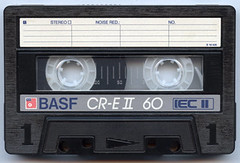I was an early user of the Commodore ‘PET’ computer at work in the early 1970’s when I worked as ‘Admissions Officer’ at the Oxford Polytechnic. You can see a YouTube video of one working if you are interested. There’s also a long and very interesting discussion in which an early adopter in 1977 explains how he programmed it to make his garage chain business more efficient.
The ‘PET’ (stands for ‘Personal Electronic Transactor’) was a fully self-contained unit (here’s a picture) released in 1977. We had the first model available.

It had the famous ‘chiclet’ keyboard which was quite hard to use. Some of the keys had ‘playing card’ symbols on them:

I had taken a short Fortran 68 course as a member of staff and had got some idea of the rudiments of programming so I decided to see what could be done using the Commodore BASIC interpreter on the machine.
One of my tasks, a dull one with some drudgery, was to keep a daily tally of applications for different courses and degrees. There was no UCCA or UCAS then. Polytechnics received applications unmoderated and directly from applicants in all parts of the world. To keep track, we counted them daily and created a large ‘five bar gate‘ grid on a very large sheet of paper ruled into squares. This seemed an ideal candidate for automation. So I wrote a fairly simple Commodore BASIC program to accumulate daily numbers into arrays so that we could add the new items each day. We took the precaution of maintaining the manual ‘five bar gate’ analysis as well in case anything went wrong. For several months it went well. The C60 cassette tape containing the data was read into memory each day, the programme duly started and all in all it relieved the clerical monotony somewhat. We could also pretend (with some justification perhaps) that it represented ‘important pioneering work’ in automating the office using modern technology.
One day, it just failed to load the program and all the data was lost. I can remember the very deep sinking feeling as I tried everything I could think of to revive it – but it was no good. It transpired that the C60 tape we were using had stretched (I should have known about this already given my previous experience with the Kalle Infotec Word Processor) and was no longer useful in loading up our precious data. There was no mechanism for backup or keeping a second copy.
It was great fun while it lasted anyway. I still have fond memories of it.
Lessons Learned: Don’t rely on one C60 tape for data storage – especially when you already know it can’t be relied on….

Filed under: Computers and IT, From T to NT to IT | Tagged: Administration, C60 Tape, Commodore PET, Early Computers, Kalle Infotec, Oxford Polytechnic, Software, Word Processor |


Leave a comment